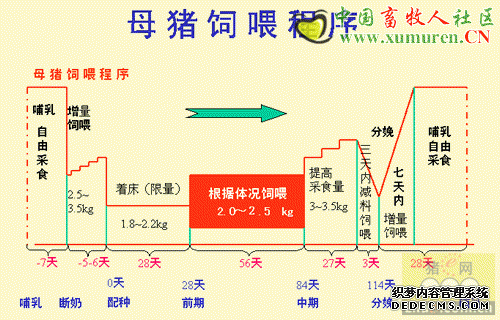The current swine and human commercial vaccines are both killed vaccines in whichprotection is afforded by the development of neutralizing antibodies primarily to the HAmolecule. In such circumstances the amount of juggling of the other gene segments is ofno consequence. Unfortunately, at least in the case of the North American situation, thereassortment of viral gene segments has been followed by a concomitant change in theHA molecule. The recent H1 molecules seem to be gathering mutations at an increasedrate. The amount of sequence divergence between certain 2001 isolates is as much as thedifference between classical H1N1 viruses isolated in the 1960s and those isolated in theearly 1990s. Studies similar to those described above in Europe are needed to assess thecross protection potential of the current vaccines against all antigenic variants.
Taken together, these data show the huge impact that the introduction of a single newvirus into a swine population can have on the diversity of viral genotypes. The U.S. swinepopulation has thus gone from a reservoir containing a single virus to one where H1N2,two antigenically distinct H3N2, and two distinct genotypes of H1N1 co-circulate (Figure1). Which of these viral lineages will eventually predominate will only become apparentif surveillance is intensified and centralized.
Conclusions
Influenza activity in recent years in the human population has been relatively mild interms of disease and viral evolution. The last major human drift variant was the 1997A/Sydney/1/97-like H3N2 viruses. In contrast, the last few years has seen major activityin influenza viruses in global swine populations, particularly in the United States. Theresulting increase in genetic diversity of swine influenza viruses is of concern for bothhuman and animal health. The likelihood is that both H1 and H3 viruses will continue toevolve and cocirculate in swine populations and that the key to managing this situation issurveillance. The challenge for the swine industry is to develop a surveillance system thatincorporates genetic and antigenic characteristics of circulating viruses. Such a systemwill be indispensable for ensuring the efficacy of vaccines and for the early detection ofnovel and potentially devastating viruses.
Acknowledgments
The work described in this report is part of an ongoing collaboration between thelaboratories of Dr Robert Webster at St Jude Children抯 Research Hospital, Dr抯 KurtRossow and Sagar Goyal from the University of Minnesota, St Paul, and Dr GeneErickson at the Rollins Animal Disease Diagnostic Laboratory, NC. This project has beensupported by the National Institutes of Health and the American Lebanese and SyrianAssociated Charities.
References
1. Beare, AS and Webster RG: 1991. Replication of avian influenza viruses inhumans. Arch. Virol. 119:37-42.2. Bikour, MH, Frost EH, Deslandes SB, et al.: 1995. Persistence of a 1930 swineinfluenza A (H1N1) virus in Quebec. J. Gen. Virol. 76:2539-2547.
3. Brown, IH: 2000. The epidemiology and evolution of influenza viruses in pigs.Vet. Microbiol. 74:29-46.
4. Brown, IH, Harris PA, McCauley JW, and Alexander DJ: 1998. Multiple geneticreassortment of avian and human influenza A viruses in European pigs, resulting2955.
5. Brown IH, Hill ML, Harris PA, Alexander DJ, and McCauley JW: 1997. Geneticcharacterisation of an influenza A virus of unusual subtype (H1N7) isolated frompigs in England. Arch. Virol. 142:1045-1050.
6. Brown IH, Ludwig S, Olsen CW, Hannoun C, Scholtissek C, Hinshaw VS, HarrisPA, McCauley JW, Strong, and Alexander: 1997. Antigenic and genetic analysesof H1N1 influenza A viruses from European pigs. J. Gen. Virol. 78:553-562.
7. Chambers TM, Hinshaw VS, Kawaoka YB, Easterday C: 1991. Influenza viralinfection of swine in the United States 1988-1989. Arch. Virol. 116:261-265.
8. de Jong, JC, van Nieuwstadt AP, Kimman TG, Loeffen WL, Bestebroer TM,Bijlsma K, Verweij C, Osterhaus AD, and Class EC: 1999. Antigenic drift inswine influenza H3 haemagglutinins with implications for vaccination policy.Vaccine 17:1321-1328.
9. Gourreau JM, Kaiser C, Valette M, Douglas AR, Labie J, and Aymardet M: 1994.Isolation of two H1N2 influenza viruses from swine in France. Arch. Virol.135:365-382.
10. Guan Y, Shortridge KF, Krauss S, Li PH, Kawaoka Y, and Webster RG: 1996.Emergence of avian H1N1 influenza viruses in pigs in China. J. Virol. 70:8041-8046.
11. Heinen PP, van Nieuwstadt AP, Boer-Luijtze EA, and Bianchi AT: 2001.Analysis of the quality of protection induced by a porcine influenza A vaccine tochallenge with an H3N2 virus. Vet. Immunol. Immunopathol. 82:39-56.
12. Hinshaw VS, Webster RG, Naeve CW, and Murphy BR: 1983. Altered tissuetropism of human-avian reassortant influenza viruses. Virology 128:260-263.
13. Ito T, Couceiro JN, Kelm S, Baum LG, Krauss S, Castrucci MR, Donatelli I, KidaH, Paulson JC, Webster RG, and Kawaoka Y: 1998. Molecular basis for thegeneration in pigs of influenza A viruses with pandemic potential. J. Virol.72:7367-7373.
声明
来源:互联网
本文地址:http://farm.00-net.com/yz/zhu/5/2007-09-18/142287.html








